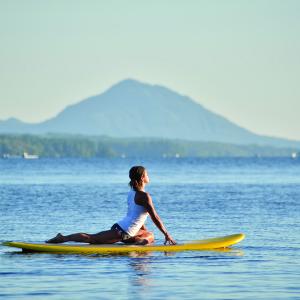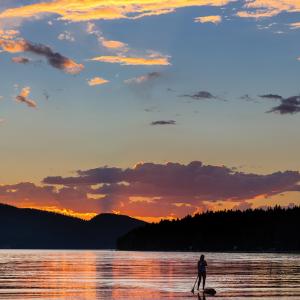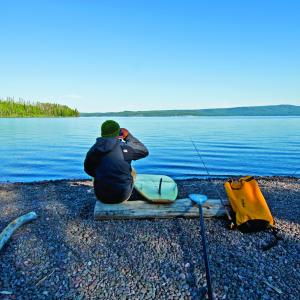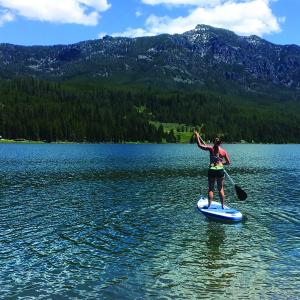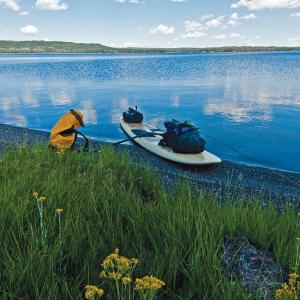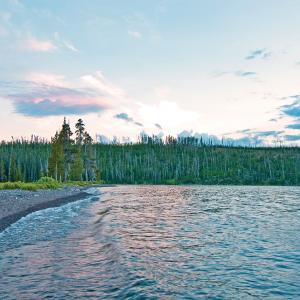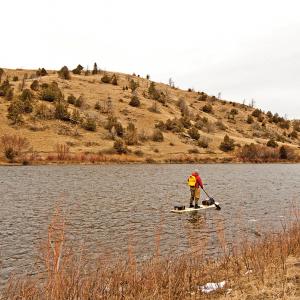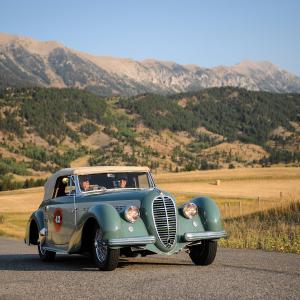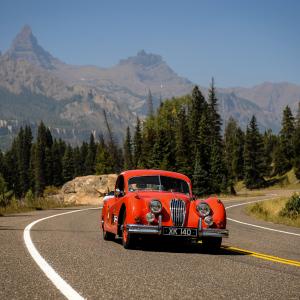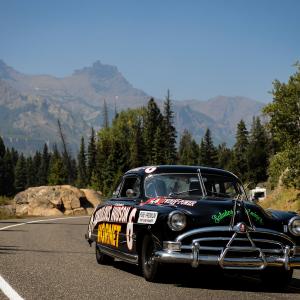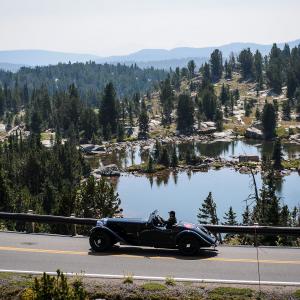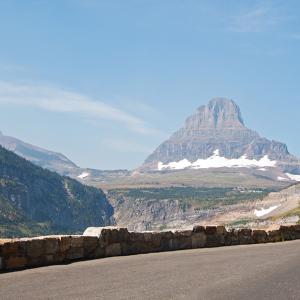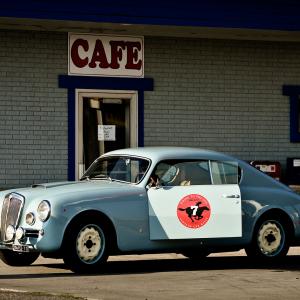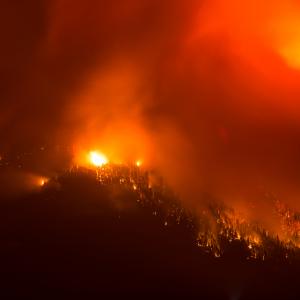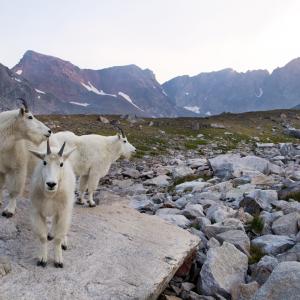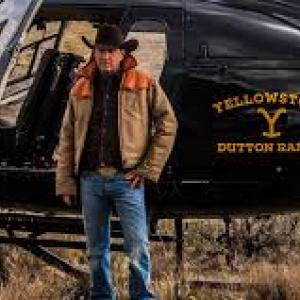On the set of Kevin Costner’s “Yellowstone"
By Brian D’Ambrosio
On a picture perfect May morning, a black Yukon Denali delivers bags of ice at the buzzing basecamp of trailers and tents. At the fairgrounds in Darby, numerous buses come and go, dropping off extras, who are dressed in cowboy hats, blue denim Wranglers, and flannel shirts, sporting looks of true grit. A number of crew members zip by with intent, including a young lady with a large wooly microphone on the end of a pole that looks a bit like a small dog.
While eating quickly at the breakfast line of the catering unit – offerings featuring classic Mexican breakfasts, ranging from huevos rancheros and eggs with pork machaca to tortilla variations – a pair of camera operators inspect the “dope sheet,” a register of scenes that have already been filmed.
With the low whistle of wind strikingly steady, the mountainous backdrop reveals a particularly dazzling presence. It’s the kind of charisma that tilts fast from grand to grandiose. Cast, crew, and various personnel flit in and out as the morning sun hovers behind a scrim of summit snow. It’s the final week of shooting the first season of “Yellowstone,” the excitement rising up in the air like coffee in a percolator.
The narrative of “Yellowstone” is set in Montana, and the show is filmed partially in Darby in and around the Chief Joseph Ranch, nestled in the foothills of the Bitterroot mountain range along Montana's boundary with Idaho. “Yellowstone” follows the Dutton family, who control the largest contiguous ranch in the U.S. Kevin Costner, who’s also an executive producer of the series, plays the fifth-generation ranching patriarch John Dutton. “Yellowstone” is directed by Taylor Sheridan, “Sicario” (2015) and “Hell or High Water” (2016) writer who turned director with “Wind River” (2017), an acclaimed crime thriller set on a Native American reservation.
Gil Birmingham, a veteran of more than 60 film and television productions, appears in the series in the role of casino owner Thomas Rainwater, and he describes “Yellowstone” as “an epic contemporary drama.”
“Thomas Rainwater is a highly educated man and he has quotable lines,” said Gil Birmingham. “He has profound lines, and the script is full of timely and injected monologues. Thomas is one of the story lines about the competing interests for the Dutton ranch. What I love about the show is that it’s not black and white, but portrayals of both sides of things, and lots of gray, and it’s a real compelling, authentic, and unique perspective of Montana life. It’s exploring themes of Western loyalty, family, betrayal, and a family deciding just what’s loyal and what’s legal. The patriarch who is doing his best to leave a legacy, and of his responsibility of what’s been passed on to him.”
“Big-Budget Theatrical Every Week”
Director Taylor Sheridan, who was nominated for an Academy Award for Best Original Screenplay for Hell or High Water, told Deadline in May that he envisions a “big-budget theatrical every week,” and that structurally, he approaches the show’s filming with the same slickness and feel of a movie production.
Montana has provided Sheridan with an exuberantly dramatic locale for such a powerfully planned series. (More than 20 Utah locations are employed, and the majority of the interiors were shot at the state-of-the-art Utah Film Studios in Park City.) At least several hundred extras have been used for various Montana scenes, including ranch-hands for the Dutton family. Behind the screen, the Paramount Network hired approximately 60 locals for transportation, production assistants and other crew jobs, one of whom is Pamela Hart, a fifth-generation Bitterroot resident.
“I’ve met some fabulous and friendly people,” said Pamela Hart. “Everyone is coming from some place different and everyone wants a little tidbit or piece of information, a hiking trail, a place to hike, information about lions, tigers, bears, everything. This is a big boost in the arm for the Bitterroot. It’s a boost for locals.”
Hart has transported Costner several times from the basecamp to the Chief Joseph Ranch.
“Costner is so down to earth, a real person with a real big sense of humor.”
Local Vendors “blood life”
Set designer Carla Curry first worked in Montana while employed as part of the production of the 1998 family drama “Everything That Rises,” which starred former Paradise Valley resident Dennis Quaid and also served as his directorial debut. Shot in the lush breadth of Livingston, the TNT production cast Quaid as Jim Clay, a fierce ranchowner living off land passed down through generations of his family who fights to hold onto his tracts when big business interests move into the area and spike prices. Curry said that she “jumped” at the chance to return to the state.
“We’ve been here (in Darby) shooting “Yellowstone” in July and August and at the end of October, and for a short stint before Christmas,” said Carla Curry. “So we’ve been here for all seasons. The first time I came out during “Everything That Rises” it was during the fires at Lolo, and now we’ve been here through the flooding in the Bitterroot.”
Curry said that the she’s been “up and down and around” the Bitterroot Valley searching for items such as cowboy hats, clothing, and assorted tack and even purchased a replica set of antique antler chandeliers that were reproduced by an artisan in Stevensville.
“There are some great antique and furniture stores around and they have all been receptive if we get into a pinch,” said Curry. “The local vendors are our blood life. It’s not just furniture, but Home Depot and the local gas stations, and all the way up to Missoula. While we are breaking from shooting, we have some 30 houseplants that come out of the (Chief Joseph) lodge that need to be watered and taken care of. We’ve had them hauled and paid a local nursery to take care of them when we are gone for a month or two. It’s the little things like that that people never think about.”
Perri Eppie, the series' publicity coordinator, estimated spending in the state is “about $1.5 million,” with approximately “$500,000 on hotels and car rentals” and “about $250,000 locally on supplies.” Propmaster Ian Raylance said that he has been able to locate most of the prop resources locally, with the minority of goods being shipped in from California.
“Typically, we spend a lot on unique elements,” said Ian Raylance. “We needed a bear rug and we found one at one of the local antique shops. We’ve gotten great stuff by Victor, saddles, bridles and ropes. There is one scene in which Kevin receives some stitches on his forehead after being bucked from a horse, and we found this beautiful circa late-1800s handheld mirror, a beautiful thing.”
Similar to other out-of-state cast and crew members, Raylance, of Utah, is renting a home in Hamilton throughout the duration of filming. “The area has been losing population and we want to keep as much money as possible as locally as we can. It’ a huge influx of cash, and we are covering just about every hotel between here and Missoula.”
Chief Joseph Ranch
Most of the Montana filming takes place on the Chief Joseph Ranch, which dates its settlement back to the 1880s. The dwelling that serves as John Dutton's is abundant with unusual nuances such as its original, irreplaceable Tiffany lamps. (The great room, the bedrooms, the offices and much of the rest of the interior has been reproduced at the studio in Utah.) The crew had only around two weeks to arrange the lodgings for production; designers repainted some of the out buildings and built a bigger corral to accommodate filming.
Initial water rights were granted to the property shortly after settlement and thereafter approximately 1,400 acres of apples were being harvested within its limit. Built in 1917, the log structure was designed by Bates & Gamble, an architectural firm in Toledo, Ohio, as a summer hideaway for William Ford and Judge Hollister of Ohio. In the years since, the 5,000-square-foot house, stretched across 2,500-acres, has seen a number of owners. But it was L.A.-based artist and production designer Ruth De Jong who scouted and recommended the ranch as a shooting location.
“Ruth took a long and hard look and she came up with Chief Joseph Ranch,” said Curry. “The ranch has become another character on the show, not just an inanimate object. You couldn’t realize how fabulous it was until you laid your eyes on it. It was also one of the fastest turnarounds I’ve ever had to do, and we didn’t even have time to shop. Yet, we’ve been able to fill it in with stuff all up and down the Bitterroot Valley.”
“Chief Joseph Ranch is intended to represent the residential look as if a billionaire lived there, and not a new money ranch,” added Perri Eppie.
“Dallas” Meets “The Sopranos”
“Yellowstone” is an ambitious drama that’s being described as a cross between “Dallas” and “The Sopranos,” a modern representation that doesn’t just come off the production house assembly line. According to nominal press material, the Dutton family must contend with constant encroachments by land developers, tension with an Indian reservation and political quarrel with America's first national park.
This afternoon the production is completing the final episode of the first season. (The show hasn’t been renewed for a second season — a pilot is currently being screened for the critics and cast members — but this is planned as a multiyear project.) In the roping area adjacent to a cluster of barns, the jostling frames of cowboys and calves synthesize into a cohesive whole – several hours of takes and re-takes which will ultimately yield but a few seconds of usable film.
A bunch of serious-looking men on horses engage in “rhubarb,” also known as background conversation by extras. (The word “rhubarb” produces the effect of real conversation, getting mouths to move believably.) In a small tent, a board displays information about the scene being filmed, scene numbers, take numbers, etc. Dolly machines provide small platforms for the cameras, rolling along special tracks. Everything is running orderly, cooperatively, even the fickle Montana spring weather.
“The film gods are definitely on our side today,” said one of the assistant camera operators. “They were predicting a few days of rain all this week, but it’s all sun right now. It’s truly incredible.”
“We’ve got an incredible cinematographer (Ben Richardson) of sweeping ideas who is often looking for ways to integrate the environment as another character in the show,” added actor Gil Birmingham.
Director Taylor Sheridan told the Salt Lake City Tribune recently that what he wanted to do “was essentially make a 10-hour movie that happened to air on television.” Paramount Network gave him the unique latitude to treat it as if a self-contained motion picture. Mindful of the failings of previous “Westerns,” the ones that tend to inspire a dreary sense of déjà vu, Sheridan said that he’s committed to keeping the dialogue and the characters nuanced.
But it’s harder now than it was then for a television show to stand out from the crowds. After previewing its feature-length premiere episode, Variety magazine said that the program “is stunningly shot, and yet beneath its mountain vistas lies nothing new, just more squabbling."
Nonetheless, the cast and crew are optimistic that the series warrants an opportunity and chance to break out.
“The scripts are so good and captivating and Taylor is the new Western storyteller,” said set designer Carla Curry. “It’s a well-woven story for sure. This one is special, and it was written for Montana, and we are grateful that we even get to do some of it in Montana. It’s been a leap of faith from Paramount.”
"I'll take searching for Wi-Fi signal at the base of a mountain over sitting at my desk any day,” said Perri Eppie, the series' publicity coordinator. “The Bitterroot community has been so welcoming and a huge asset in making Montana a character in and of itself on ‘Yellowstone.’"
The Paramount Network has announced a premiere date for “Yellowstone” — it’s scheduled to debut June 20 at 7 p.m. MST. (Paramount Network is the rebranded Spike channel.) “Yellowstone” screens in Missoula at the Wilma Theatre June 14.
